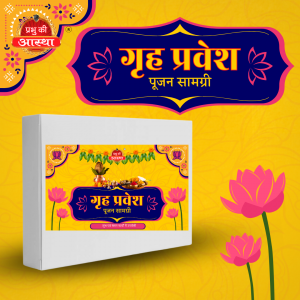Roli, also known as kumkum, is a red-colored powder that is widely used in Hindu religious ceremonies and rituals. It is made by grinding turmeric and other natural ingredients, and is often mixed with sandalwood paste or other items to create a fragrant and colorful paste. Roli is considered to be a sacred substance, and is used to mark the forehead or other body parts as a sign of blessings or auspiciousness. The red color of roli is believed to represent the creative energy of the divine feminine, and is often used to symbolize devotion, purity, and good fortune. Roli is also used in various Hindu festivals and ceremonies, such as weddings, and is often offered to deities as a sign of respect and devotion. The use of roli is an important aspect of Hindu culture and is believed to have spiritual significance in enhancing one’s connection with the divine.
PUJA ROLI DIBBI
Roli, also known as kumkum, is a red-colored powder that is widely used in Hindu religious ceremonies and rituals. It is made by grinding turmeric and other natural ingredients, and is often mixed with sandalwood paste or other items to create a fragrant and colorful paste. Roli is considered to be a sacred substance, and is used to mark the forehead or other body parts as a sign of blessings or auspiciousness. The red color of roli is believed to represent the creative energy of the divine feminine, and is often used to symbolize devotion, purity, and good fortune. Roli is also used in various Hindu festivals and ceremonies, such as weddings, and is often offered to deities as a sign of respect and devotion. The use of roli is an important aspect of Hindu culture and is believed to have spiritual significance in enhancing one’s connection with the divine.
Related products
-
 Read more
Read moreGrih Pravesh Puja Kit – Complete Essentials for an Auspicious New Beginning Step into your new home with divine blessings and positive energy using our Grih Pravesh Puja Kit, a comprehensive set of sacred items specially curated for performing the traditional housewarming ceremony. According to Vastu and Hindu traditions, a Grih Pravesh Puja cleanses the space,…
-
 Read more
Read moreGaumutra, also known as cow urine, is a substance that has been used for centuries in Ayurveda, an ancient system of medicine that originated in India. Cow urine is considered to be a sacred substance in Hinduism, and it is believed to have medicinal properties that can help treat various ailments. In Ayurveda, gaumutra is…
-
 Read more
Read moreKunwari Dhaga, also known as Kalava, is a sacred thread used in Hinduism during various auspicious occasions and puja ceremonies. It is usually made of cotton and is tied on the wrist of the person performing the puja or the person for whom the puja is being performed.
The Kunwari Dhaga is believed to be a symbol of protection, purity, and blessings from the divine. It is also said to represent the bond of love and trust between the devotee and the deity being worshipped.
During puja ceremonies, the Kunwari Dhaga is tied around the wrist of the devotee by the priest or the elder family member, along with chanting of mantras and prayers. The thread is tied on the right wrist of men and the left wrist of women.
It is also believed that wearing the Kunwari Dhaga helps in warding off negative energies and evil spirits. It is considered auspicious to wear the thread until it falls off naturally, which is believed to happen when the blessings of the deity have been fulfilled.
In conclusion, Kunwari Dhaga holds great significance in Hinduism and is an integral part of many puja ceremonies. It is a symbol of devotion, protection, and blessings from the divine.
-
 Read more
Read moreRoli, also known as kumkum, is a red-colored powder that is widely used in Hindu religious ceremonies and rituals. It is made by grinding turmeric and other natural ingredients, and is often mixed with sandalwood paste or other items to create a fragrant and colorful paste. Roli is considered to be a sacred substance, and is used to mark the forehead or other body parts as a sign of blessings or auspiciousness. The red color of roli is believed to represent the creative energy of the divine feminine, and is often used to symbolize devotion, purity, and good fortune. Roli is also used in various Hindu festivals and ceremonies, such as weddings, and is often offered to deities as a sign of respect and devotion. The use of roli is an important aspect of Hindu culture and is believed to have spiritual significance in enhancing one’s connection with the divine.







Reviews
There are no reviews yet.